THB #93: The Batman (no spoilers)
| March 6, 2022
It turned out to be a pretty terrific year for film. Movies you can watch repeatedly and keep mining new stuff and reassessing old without getting bored.
I stuck to 20 motion pictures, overall. Two sets of 10. And the only hierarchical order within the two groups is for my top choice.
Top 10 Motion Pictures of 2020, Top Pick, then alphabetical order
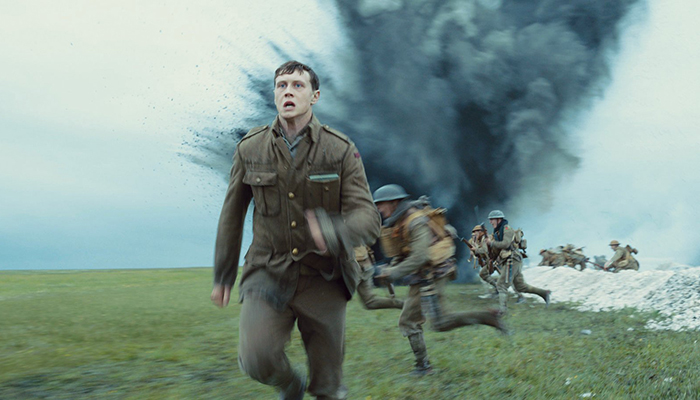
#1 (Tie, alphabetical) 1917 – One of the great clock movies of all time, s never loses sight of the ultimate goal of the journey, but does shift gears throughout to take the audience through a wide range of emotions. The film also universalizes the enemy, mostly by their physical absence through most of the running time, which in turn allows a film with very, very specific tasks to be a reflection on the sanctity and immediacy of life (and death). We are not asked to identify with specific behaviors of the people we meet, so much as to recognize what is human in each of them and then, as people do, to move on. We are all someone’s child, someone’s sibling, someone’s victim, someone’s villain, someone’s parent, and someone’s object of love. One never knows when and how life is going to call us to action, challenge us to be our best, demand that we be our worst, and then spit us out to wait, again, for those moments when we can barely catch our breath… until we can again.
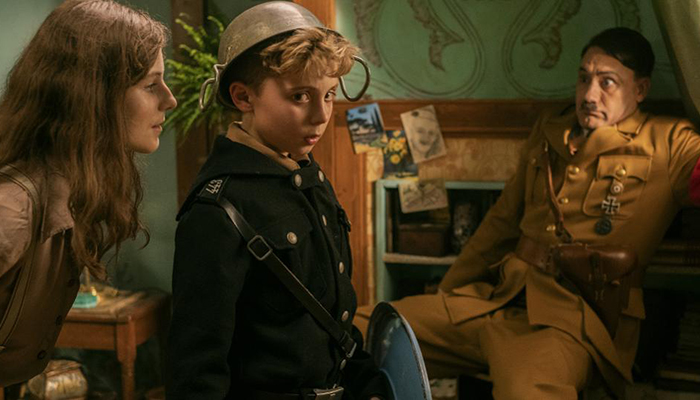
1 (Tie, alphabetical) Jojo Rabbit – A masterpiece in one of most well-worn genres of cinema, the coming-of-age story. Taika Waititi starts and ends with the most basic of human urges… to be included in something bigger than ourselves. And he finds the deep truth, that for an immature person who is living the moment, there is little spiritual difference between Nazi Germany and a valley high school. This is also where he seems to lose a bunch of people. Because there is nothing funny about Nazism. But there is something both funny and true about the human condition. And if you can’t separate the two ideas, this movie will confound you. But if you can, it is an experience like no other. Jojo is a boy who wants to be a Nazi, as that is what dominates his world in Berlin. Both of his parents (one absent) are clearly doing what they can to stop the Nazi movement from within, but his mother seems to be comfortable that their child is safer in his delusion than in the brutal reality of that world. Still, after a comic and scarring trip to a Nazi youth camp, Jojo’s mother starts the process of introducing Jojo to reality slowly, starting with tying his shoes. The process accelerates with the discovery of a Jewess hidden in the wall of his dead sister’s bedroom. And after a major turn at the 30-minute mark in the film, Jojo has no choice but to grow up, though the transition remains, as it will, slow.
Maybe both films I most love this year share this theme… the continuation of life in the most extreme circumstances. Life challenges those who have everything. Life rewards people who have nothing or are in mortal danger. We laugh. We cry. We fall in love. We are of the world. We are living in a moment in America where the “most powerful man on the planet” behaves like a child desperate for attention and love, unable to fill the pit of self-loathing, and threatening and endangering millions of relatively innocent humans as a result. A significant percentage of Americans, the most advantaged nation on earth, are desperate to hang onto what they see as their legacy, even if many of these folks are amongst those with the least success in The American Dream. And it’s not just America. The world gets smaller and smaller, yet people continue to fight over turf like their life relies on it… but the people in each nation who are really suffering are just pawns in the process, not the provocateurs. Everyone on every side of every issue needs to find a way to be open to those who disagree with them or we are going to be in real trouble. That doesn’t mean you should be nice to your local neo-Nazi or racist or sexist, etc, etc, etc. But it does mean that we need to see people who feel differently than us, no matter how evil or wrong, for the complexity of emotions that they are. In other words, we don’t need to believe a word Hannity or Fucker Carlson says, but we need to be able to understand why people choose to believe those carnival barkers if we ever hope to find peace with them. Being right is not enough. We need to understand what is wrong. Both of these films are about ordinary people in extraordinary circumstances. We must stay open to the tests of life.
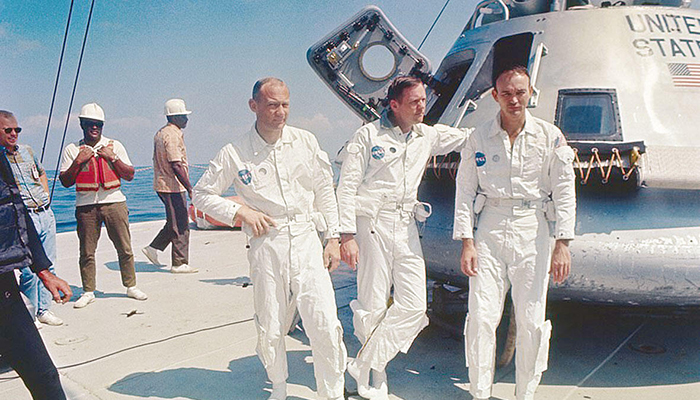
Apollo 11 – There isn’t a lot to explain about this masterful piece of found footage and research documentary. Six decades ago, amidst a blurry haze of nationalistic ambitions, Americans raced to do something that was really beyond reality. The Wright brothers flew at Kitty Hawk in 1903. Ford’s Model T went on the market in 1908. Sixty years later, a man went to the moon and came back. The subject has inspired endless numbers of semi-fictional and documentary films. But this film, in form (with remarkable large-frame film footage) and function, is one of the most powerful legacies of that moment we have seen on a big screen.
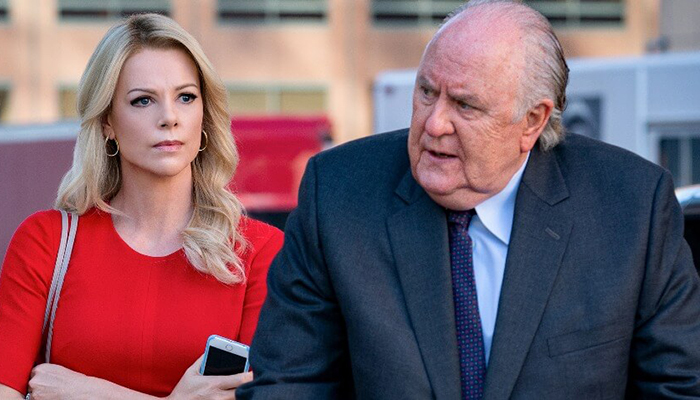
Bombshell – If you want to see the best film about Roger Ailes, see Alexis Bloom’s Divide and Conquer: The Story of Roger Ailes, currently streaming on Amazon Prime. But if you want to see a brilliantly written and performed piece of drama about sexual harassment at the highest levels of American business, see Bombshell. There are truthful details in this film and this is part of what makes it so good. But it’s not a docudrama or a full picture of what happened at Fox News. Screenwriter Charles Randolph creates, out of reality, a trinity of modern, working women, each of whom has a different, but similar experience. Nicole Kidman’s Gretchen Carlson starts the film at the end of her usefulness to Roger Ailes and Fox News. Charlize Theron’s Megyn Kelly is in the prime of her value to Ailes and Fox. And Margot Robbie, in a character created as a reflection of multiple women, is at the start of her value. The movie understands this trio, including the competition between the women for their place in the food chain. The film is not just about their abuse. But it also doesn’t shy away from their abuse. Leading the band is John Lithgow as Roger Ailes, in one of the great performances of the year (and of his remarkable career). Lithgow’s Ailes is not a simple character. He will be as susceptible to the highs and lows and general vagaries of life as his female victims. This is a hallmark of Bombshell. It never just takes the easy road. Being a victim doesn’t erase you sexuality. Characters who we think of as “wrong” believe what they believe deeply, no matter what happens around them. And the worst victimizers are not alone in victimizing the women in a business beehive. In fact, sometimes the people who most intend to do good, do damage as a result. As in life.
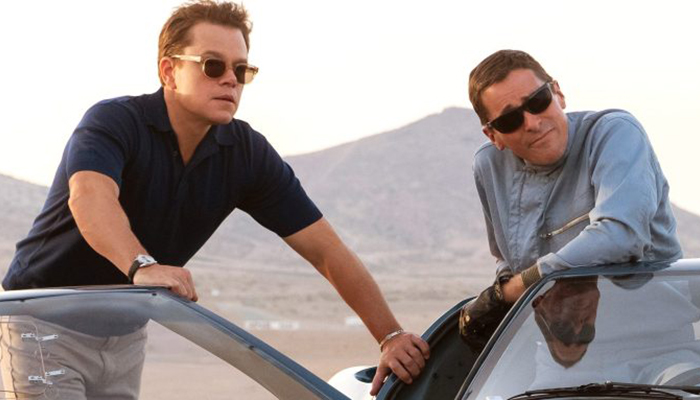
Ford v Ferrari – A classic tale of obsessive manhood. I would love to see more movies about women’s non-romantic obsessions. But that doesn’t devalue this beautiful piece of work about these men. The stakes, at a time when societal change is a major focus, are low. Men winning a race with very expensive toys. But this piece is directed and performed with all the skills and magic that Hollywood can offer and I enjoyed it enormously. I am not a motorhead. I never watch “Top Gear.” I drove a Mustang for 20 years, so I know who Carroll Shelby is, but I never heard of Ken Miles. The two men are empowered by a classic American jackass, Henry Ford II, played by the great Tracy Letts. Enzo Ferrari was in no way a villain in the real story… another big ego guy just trying to keep status. Was Leo Beebe as much of an asshole as he is in this movie? I don’t know. His final act is one that is historically confirmed. Whether he was as much of a jerk along the way, I don’t know. But I went to a movie, not a history lesson. And I had a great time. There are better car action films. There are better buddy movies. But this movie just plain works the way a movie should, from start to finish. And not many can make that work.
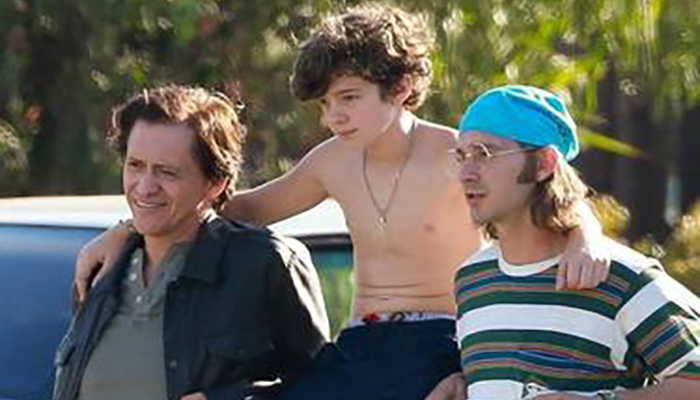
Honey Boy – The last movie I expected on my Top 10 this year was Shia LaBeouf’s autobiographical examination of his relationship with his father, directed by a first-time feature filmmaker that wears its weirdness on its marketing sleeve. But it has stuck with me since I saw it at Toronto in September. LaBeouf is a remarkable actor when he chooses to be and this is one of those cases. I have no way of knowing what his father was really like, but LaBeouf seethes with the passion in the performance in a way that only a child who watched every tick intimately for years. Noah Jupe is game and rides what feel like waves of madness on that set like a pro three times his age. The Lucas Hedges performance is wildly underdiscussed… maybe his best work in what is already a pretty amazing career. And director Alma Har’el manages not to get lost in the madness, which is no mean feat. In many ways, this movie struck me as a David Lynchian documentary. (I am a big, unexpected fan of Lynch’s doc, Duran Duran: Unstaged, but not the issue of the moment.) The film is surreal, but oh so real.
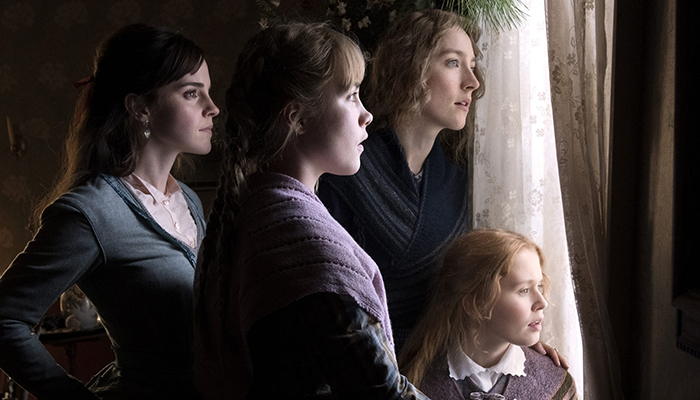
Little Women – I am not an expert on “Little Women.” I think I was forced to read it at gunpoint in 10th grade or so. I was underwhelmed buy the Gillian Armstrong version back in 1994. And sophomore slumps for young directors are to be expected. No such problem here. In fact, in telling a story that is the least clearly personal of the films she has written or directed before, Greta Gerwig raises her game significantly with this film. She takes the classic story and she infuses each of the women (and the men) with an acknowledgement of the moment in history and also with a clear sense of self for everyone. Even then the world is acting upon them, they are somehow a little above. The adults act like adults, however generous or not. But the girls have the stridency of youth. They want what they want. They want others to want what they want. Loss is never too far away. But like most young people, the energy keeps moving forward. Greta Gerwig is a filmmaker of the heart. You feel her love of every character and the love inside each of them comes across as a result.
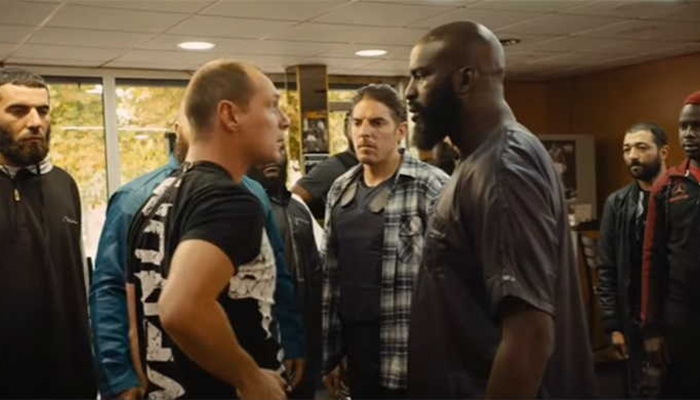
Les Misérables – My two favorite Les Mis-es were this year. The other was the PBS version with David Oyelowo as Javert. The one at hand is not a direct adaptation of the Victor Hugo novel. Ladj Ly and his co-screenwriters Giordano Gederlini and Alexis Manenti tell the story of an immigrant neighborhood in Paris that, as the films unfolds, is balanced between five different social forces, from the corrupt police to the religious leader who operates out of the back of his restaurant. The balance is disrupted and thus, the tale is told. This is an incredibly powerful film that thrills and horrifies and brings the audience to tears.

Parasite – Bong Joon-Ho’s Parasite is perhaps his most complex mix of genres in the goal of telling a societal tale. Comedy, black comedy, farce, thriller, horror film, and more, what seems so simple in a logline blooms and becomes more and more complex as we run to the finish line. In many ways, it is another variation on what Jordan Peele was chasing after (and not quite getting there, in my opinion) with US, earlier this year. The two families, one well-off and another in financial trouble, reflect one another in ways expected and unexpected. And they reflect the audience as well, as out alliances are made and unmade, tested, broken, and rebuilt in unexpected ways.
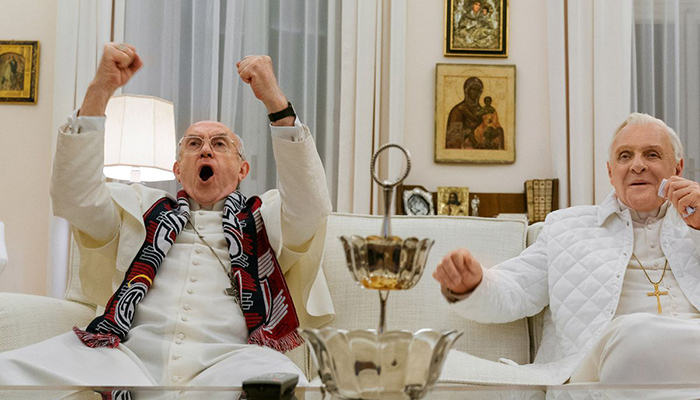
The Two Popes – Two Popes walk into a Vatican property… that’s pretty much the movie. Fernando Meirelles has done a remarkable job taking us inside the walls of the Vatican and the process of electing a Pope, amongst many other landscapes. But the first star of the show on this film is Anthony McCarten’s screenplay, which manages to bring a long conversation between and around a Pope and a Pope To Be to life with great depth and even Latin without even becoming too much about the Catholic Church or its dogma, but rather about the humanity which unites us all. The film commands you attention. And your admiration. Your laughs and your tears. One of the most surprising films of the year and one of the best.
My Second 10 Motion Pictures of 2020, alphabetical order
Dolemite Is My Name – A movie about what was pretty ugly in blaxploitation that becomes a beautiful tale of passion and perseverance against all odds. Screenwriters Alexander & Karaszewski see the oddballs differently than anyone else and then deliver screenplays that help us all see them that way. Thrilling as part of the Eddie Murphy return to full-time adult comedy. Thrilling for the return of Wesley Snipes. Thrilling for the discovery of Da’Vine Joy Randolph. But mostly, an experience of joy and love of cinema.
For Sama – There were a lot of tough, strong movies this year. This documentary, initiated, co-directed, and featuring by Waad Al-Kateab (joined in directing chores by doc veteran Edward Watts), this is the true story of five years of barely surviving Aleppo, Syria, as Waad and her family try to not only live, but contribute to their home town. This film is a brutal experience, especially if you have kids… lots of broken children in here. But the power of the film is undeniable.
A Hidden Life – Terrence Malick’s most story-structured film in years, this based-on-truth story of a conscientious objector who won’t fight for the Nazis when recruited from his Austrian farm is a meditative look at faith and honor and having the courage of your convictions. I can’t deny that it is long… but it is beautiful indeed.
High Flying Bird – I loved this team-up between Steven Soderbergh and the playwright who wrote Moonlight, Tarell Alvin McCraney. Released by Netflix last February, I don’t know if it even played in any theaters, aside from Slamdance and Film Comment Selects. It was shot on a phone. But that is not a standard I think matters. If we are sticking with the “if it feels like a movie” logic, it qualifies. Everything about this movie is provocative and powerful. It’s almost a calm cousin of Uncut Gems, as it examines what the owner, player relationship is in the NBA and how, in so many ways, it still feels wrong.
Knives Out – Start with a masterful script by Rian Johnson. Then fill that world with very engaging actors, some playing on the note we know, others playing hard against it. Let Rian Johnson shoot it his way. And enjoy.
Longshot – I love this raunchy, surprisingly not-unrealistic comedy. Charlize Theron is every bit the actress she can be in her highest level work here and Seth Rogen keeps up better than you might expect. She brings him through a lot of it without ever making it look like she is working extra hard. I don’t mean to insult him at all, but he often plays the same guy and he shows an extra gear by the third act, in particular. In a certain way, this film makes a sensible double feature with Bombshell, as Theron plays another variation on the woman who everyone stares at, though here, she has a lot more power and is given more respect. But she is still playing the gender game at the start of the film and her character’s decision making about how to manage what isn’t expected of her as a public figure is more interesting than a movie with a guy shooting semen in his own face would seem to deserve. (I wish they had cut that a bit, as it distracts from what was otherwise a quite tradition, but modern sexy romantic comedy.)
Once Upon A Time… in Hollywood – Quentin Tarantino continues to become a better and better director. He has been one of our best screenwriters from the very start. He has been a genre of screenwriting for 20 years or so and yet, he still writes in his voice, and he still delights and surprises us as an audience every time (even if we had a hard time with some of the language in Django and his unwillingness not to provoke almost haphazardly at times). I consider the real-life elements of this film, that do end up at its center, the most metaphoric of his career. I don’t think it’s revisionist history, but a story about being the shining, perfect center of the universe and what it feels like when that fades, at least for a while. Margot Robbie’s Sharon Tate is The Shiny Object. Leo DiCaprio’s Rick Dalton is The Fading Shiny Object. And Brad Pitt’s Cliff Booth and The Manson Family are the opposite sides of brutal reality, both harsh and unwanted in certain ways, but Cliff having indulged and suffered for the follies of his youthful abuses while The Manson Family is just on the cusp of doing history damage. The reality-bending element connects for me a bit like 1917, in that it seems to me to be about the idea of how close instant, permanent change can happen on a whim, and how fickle fate really is.
Pain and Glory – What feels like Almodóvar’s most intimate film, it also represents a magnificent late-mid-career performance by longtime collaborator, Antonio Banderas. This is not kitsch Almodóvar. This is seriously reflective. A few laughs, of course. But a man facing the truth of his life. Beautiful.
The Painted Bird – Another very tough movie. Over three hours. Black-and-white. Multiple European languages. But there is something meditative about this episodic story of a boy moving from one tragedy to another, just trying to stay alive.
Uncut Gems – The Safdie Brothers have a style. Undeniably. They have relentless energy and a way of seeing things that pushes audiences to the edge of their comfort zone, but is utterly grounded in reality. This film may be the apex of that style. Adam Sandler, playing as over-the-top a character as he did in The Waterboy, but in a completely different, shockingly realistic way, goes through the paces for the brothers this time out. And he is excellent. But the brothers are the movie. It’s the rare thing… a movie that can’t be spoiled by repeating the story or moments (though I won’t) because the experience of the film is much more than any story or single moment. In a away, it is the 1917 of the hyperactive diamond business gambling-addicted conmen movies with what feels like a million cuts for every one in 1917, though it also has some wonderful one-ers. However you see it, pee first. Don’t break up the viewing. All in. Take the whole ride. And keep some oxygen handy.

-30-
May 1, 2022

"Netflix, the great disrupter whose algorithms and direct-to-consumer platform have forced powerful media incumbents to rethink their economic models, now seems to need a big strategy change itself. It got me thinking about the simple idea that my film and TV production company Blumhouse is built on: If you give artists a lot of creative freedom and a little money upfront but a big stake in the movie’s or TV show’s commercial success, more often than not the result will be both commercial (the filmmakers are incentivized to make films that will resonate with audiences) and artistically interesting (creative freedom!). This approach has yielded movies as varied as Get Out (made for $4.5 million, with worldwide box office receipts of more than $250 million), Whiplash (made for $3.3 million, winner of three Academy Awards), The Invisible Man (made for $7 million, earned more than $140 million) and Paranormal Activity (made for $15,000, grossed more than $190 million).From the beginning, the most important strategy I used to persuade artists to work with me was to make radically transparent deals: We usually paid the artists (“participants” in Hollywood lingo) the absolute minimum allowable by union contracts upfront, with the promise of healthy bonuses based on actual box office results—instead of the opaque 'percentage points' that artists are usually offered. Anyone can see box office results immediately, so creators don’t quarrel with the payouts. In fact, when it comes time for an artist to collect a bonus based on box office receipts, I email a video clip of myself dropping the check off at FedEx to the recipient."
Jason Blum Sees Room For "Scrappier" Netflix
| April 30, 2022

"As a critic Gavin was entertaining, wry, questioning, sensitive, perceptive"
Critic-Filmmaker Gavin Millar Was 84; Films Include Cream In My Coffee, Dreamchild
April 29, 2022

| January 24, 2022
DP/30 Audio: Bombshell, Jay Roach
| December 13, 2019
DP/30 Audio: The Last Black Man in San Francisco, Jonathan Majors
| December 4, 2019
DP/30 Audio: The Mustang, Laure de Clermont-Tonnerre
| December 4, 2019
This is a year when it’s hard to argue with a single film on your top 20…it was indeed a terrific year for cinema: original comedies, provcative dramas, and many films that are a bit of both and more – 4 of your 20 are what could be called “audacious” – wildly creative films with moments that are jaw-dropping in their originality. “The Farewell” was also a great example not getting in the way of a great story. This list is also filled with so many “original” ideas, not IP or sequels – and so many of them were successful.
Divide and Conquer: the Story of Roger Ailes is a great documentary and is currently streaming on Hulu (not Amazon, as indicated in your article). Thanks.
No Irishman, huh?
My favorite Les Misérables remains the version Claude Lelouch directed in 1995.